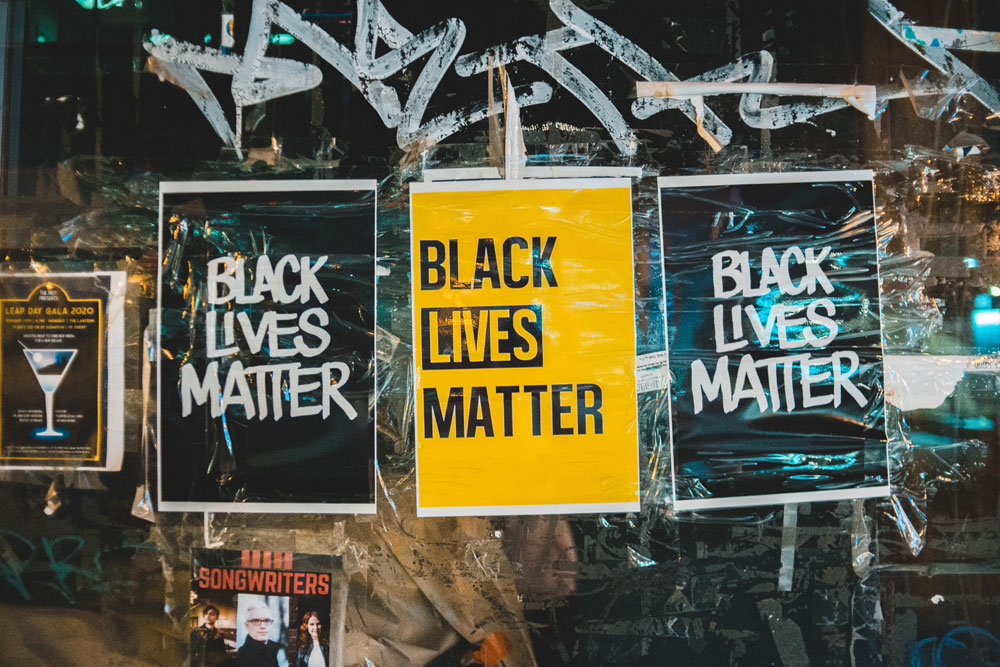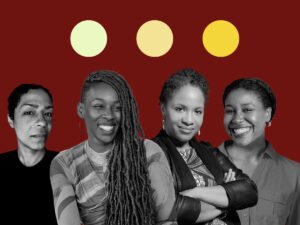
As we reflect on the recent US election with Joe Biden and Kamala Harris as the new president and vice president-elect, we know it’s even more clear that women of color, especially Black women, are a powerful mobilizing and organizing force. Their leadership, commitment, and work impacted this critical election significantly and demonstrated their importance in leading global movements. In this light, it’s all the more critical to address anti-Blackness in this country and globally.
And, as we also recall the abject lack of justice in Louisville, Kentucky, for the murder of Breonna Taylor, and the uprisings for racial justice that continue globally, with explicit callouts to philanthropy, those of us in philanthropy must alter our grantmaking to better reflect present-day realities regarding the unequal distribution of power and resources, and ongoing systemic injustice.
The silos of racial justice, gender justice, and safety collided in the activism around Breonna’s death and that of so many other black women, and yet philanthropy is ill-equipped to activate resources across these interconnected issues. While some foundations have pledged to give more, philanthropy must go further to dismantle the issue silos that have kept us from actively championing the Black women, girls, and transgender, nonbinary, and gender-nonconforming people who are not only leading the latest resounding call for racial justice, but who are the lifeblood of so many movements for social change around the world.
Black women and girls have for decades—for centuries, really––been at the forefront of visionary efforts to end white supremacy and anti-Blackness on a global, revolutionary scale. They, along with Indigenous and other women of color, have been the ones pushing for gender equality, freedom, and justice. They have relentlessly shone a light on the fact that racism and anti-Blackness, patriarchy, and misogyny are intertwined systems of power that rely on each other to persist.
Yet how interpersonal and community violence against Black women and girls is inextricably connected to violence committed by the state—whether through deadly disregard for their safety or outright brutality perpetrated in their homes, workplaces, and schools, in the US and around the world—is not fully appreciated or accepted among donors and foundations.
Therefore, it is no surprise that those who hold power and money consistently overlook and under-support Black, Indigenous, and women-of-color-led efforts for racial, economic, and gender justice. Funding for girls, women, and femmes of color has been severely limited, and on the periphery of philanthropic giving for too long—only 0.6 percent of foundation funds were targeted to women of color in 2016.
This oversight is deadly for all of us, considering the crucial role women of color play in movements. Even within large philanthropic institutions, funding with an explicit gender lens is often limited, compared to other issue or program areas. This scarcity model during a time of abundant philanthropic giving should give foundations pause—and spur grantmakers to reconsider the field’s priorities.
The work that philanthropy—including the Collective Future Fund, its members, and our peers—needs to do starts with looking at ourselves and interrogating our own practices and biases to ensure more funding goes directly to support Black women’s strategic visions and expertise. Here are some ways we as funders can invest our resources and money to begin to realize our statements of solidarity with Black Lives Matter, and to center Black women’s leadership in particular:
1. Recognize and fund safety for Black girls, women, and femmes to continue leading the work for a liberated future.
Black femmes are often at the forefront of liberation movements. For example, three Black women who were seasoned organizers and brilliant visionaries were the original founders of Black Lives Matter in 2013. And today, whether in the US, keeping up the drumbeat for justice for Breonna Taylor; in Nigeria, taking to social media to call for #JusticeForUwa, #JusticeForTina and #JusticeForJennifer; or in Brazil, fighting for justice for Marielle Franco, Black girls, women, femmes, and non-binary people are at the forefront of efforts to connect the dots between interpersonal, institutional, and state violence.
Sign up for our free newsletters
Subscribe to NPQ's newsletters to have our top stories delivered directly to your inbox.
By signing up, you agree to our privacy policy and terms of use, and to receive messages from NPQ and our partners.
But this is only one facet of the work being done, day in and day out, by Black women to affirm that Black Lives Matter. They are pushing for a liberated future in which all Black people can live and thrive, whether through movements to abolish carceral systems, decolonize education through freedom schools, or reimagine food systems so everyone can have full access to healthy foods and sustainable livelihoods.
2. Make the violence against Black women and girls visible.
Andrea Ritchie and Kimberlé Crenshaw’s crucial #SayHerName report became a broader campaign to raise awareness of the murders of many trans and cisgender Black women that is often not recognized in the mainstream narrative alongside highly publicized cases of Black men killed by police. Activist Oluwatoyin Salau, a Black 19-year-old activist in Florida, was murdered after reporting her sexual assault. Shukri Abdi, a 12-year-old Somali refugee in England, was drowned in a river. Women in Rwanda were raped by police to enforce the coronavirus lockdown. Riah Milton and Dominique Rem’mie Fells, two Black trans women in the US, were brutalized and killed around the same time that people were taking to the streets grieving and outraged over the death of George Floyd.
We in philanthropy must continue to face it, and to deeply grasp how anti-Black violence against women and girls is pervasive and global –– which should be mirrored in philanthropy’s response.
3. Build solidarity and mutually reinforcing strategies across borders.
In spite of persistent barriers, Black women- and femmes-led organizing is not only surviving but also persistently driving transformational change around the world. Indeed, as Black Lives Matter cofounder Opal Tometi says, “The truth of the matter is we are living in the age of globalization, for better or worse, culturally, economically, politically and geopolitically. My suggestion and my hope are that people will begin to get involved at the local level but ensure that they are part of global networks.”
At the Collective Future Fund, which one of us directs, we believe that transnational solidarity is essential for a collective future free from violence. Organizations like JASS and Black Women’s Blueprint are building deep connections of feminist movement building across the Black diaspora and facilitating transnational strategy conversations among Black women movement leaders. These efforts point to the scale of change and organizing that could be possible if leaders in philanthropy commits themselves to employ an intersectional, transnational approach to funding.
4. Go beyond rapid-response funds: commit to Black-, Indigenous-, and women-of-color-led organizations for the long haul.
Philanthropy often recognizes that women and girls are affected during disasters and other catastrophic events, and foundations often provide relief funds to mitigate the disproportionate impact on them. However, if a community is anchored in women’s ability to organize, then it’s imperative that they have long-term resources to build back from the disaster and create lasting change by seizing upon the opportunities to organize that have emerged.
As Ash-Lee Woodard Henderson, the first Black woman executive director of the Highlander Center in the US South, rightly challenged: “Philanthropists: Fund us like you want us to win.” Through longer term relationships with women-of-color-led organizations, it becomes more possible to truly listen and learn from these groups and their leaders, rather than assuming we know what they need or throwing unneeded “capacity-building” their way to justify the racialized perception that it is a “risk” to fund them for the long term.
5. Turn the mirror on ourselves in philanthropy.
To do all the above, it will be critical to build meaningful relationships of trust and collaboration with movements and the Black women who lead them. If philanthropy hopes to maintain credibility and relevance around the world as we navigate the crises in 2020 and beyond, it cannot keep reinforcing existing structures and approaches that further entrench the problems we are trying to uproot. We must recognize that the journey of committing, and re-committing, to centering Black feminist organizing and leadership begins with taking the lead from Black women on the ground rather dictating the strategies, as philanthropy is known to do.
We know that those of us in the philanthropic sector must not just shake our heads, issue statements of solidarity, or even just release rapid-response funds. We can do the necessary work of moving major philanthropic resources for Black women and girls from the marginal place they have been in many foundation portfolios to the center of philanthropic strategy. Only through this expanded resourcing and deeper reckoning will a collective future be developed, where feminist social justice movements, survivors of violence, and donors can come together to heal and mobilize to shape a collective future free from anti-Blackness, misogyny, and violence.













